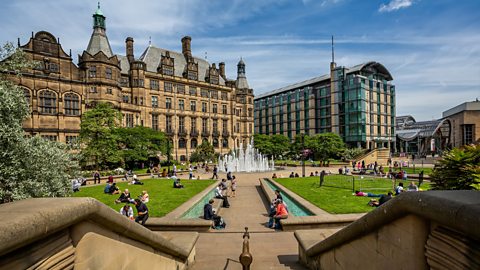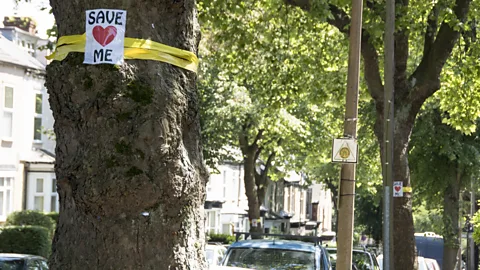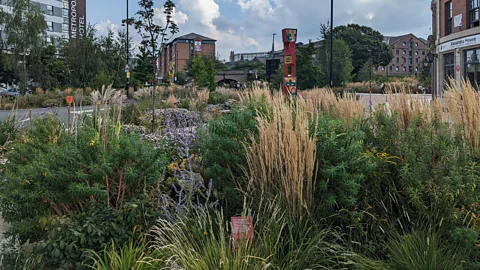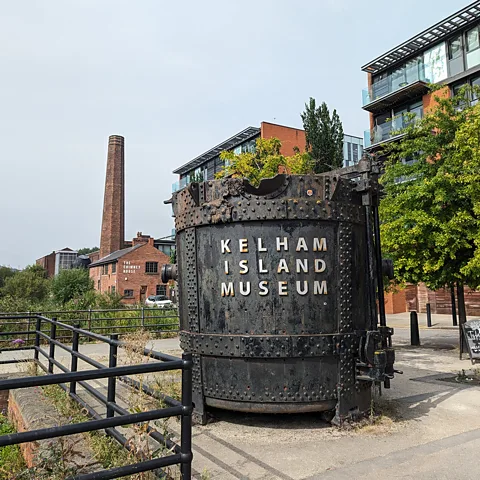
Sheffield, South Yorkshire’s largest city, grew around rivers, valleys and blast furnaces. Today, however, it’s the greenest city in the UK.
The sun streamed into the high vaulted warehouse at Sheffield’s Kelham Island Museum where the whopping 425-ton, 12,000-horsepower River Don Engine, designed to roll armour plating, chugged into life, small puffs of steam belying the raw power of its rotating pistons. I’d joined a group of onlookers eager to see Europe’s most powerful working steam engine as a reminder of the industries that defined this city’s heritage.
Sheffield is a hilly place, where neighbourhoods roll over seven gentle peaks that surround the city centre set snugly in the middle of a valley. It’s also at the confluence of five water sources – the River Don and its four tributaries, the Sheaf, Rivelin, Loxley and Porter Brook – which played no small part in its evolution.
The fast-flowing water propelled waterwheels that powered hundreds of mills from as early as the 12th Century, and Sheffield became the birthplace of small steel items like cutlery and knife blades. The advancements in technology and scale afforded by the later Industrial Revolution sealed Sheffield’s reputation as the leading producer of steel, which is how it earned its tell-tale name, “The Steel City”.

Yet, this once-mighty industrial powerhouse now has the greenest city centre in Great Britain, with a whopping 61% of its catchment area given over to parks, woodlands and gardens, including one-third of the Peak District National Park, with its exposed moors and scrubby heathland. While the access to the countryside may not be new, the public appreciation of Sheffield as a truly green city has grown in recent years.
Shades of green
Sheffield’s green credentials aren’t limited to trees and parklands. In the 2021 Green Cities Report by NatWest and The University of Southampton, Sheffield emerged as the UK’s eco-friendly leader, ranking highly on several criteria including green energy production as well as its goal of becoming a net-zero carbon city by 2050.
A fundamental shift came in 2012 when the city made headlines after council contractors began felling a number of healthy trees to make way for new saplings, something that unsurprisingly upset many local residents. Sheffield’s tree debacle rumbled on for years until December 2018 when an agreement was struck between local campaigners and the city’s council. From sapling stumps, a great green initiative grew and the innovative Sheffield Street Trees Partnership (SSTP) was created in 2019.
“There has been a lot written about the felling of Sheffield’s street trees,” said Nathan Edwards, Chair of SSTP. “Some say that the dispute has changed the narrative in the city, connecting people to their green spaces. I think Sheffielders have always had a connection to green space. The street tree-felling incident reenergised and brought to the fore something that perhaps was always there.”
Today, with around 4.5 million trees across the city, Sheffield’s tree population far outstrips its human one of just more than 550,000, with more trees per person than any other city in Europe. As Edwards put it, “this translates to approximately seven trees per resident with a tree cover percentage of 18.4%. This means that nearly one-fifth of the city’s surface is covered by trees.”
In 2022, SSTP’s work bore fruit when Sheffield was recognised as one of the international Tree Cities of the World by the eponymous organisation that celebrates councils who proactively manage their urban forests.

Visitors to Sheffield can explore the city’s green side via the enormous and ambitious Tube-style Greenground Map, which aims to celebrate all 800 of Sheffield’s green spaces by highlighting the countless different trails and walking opportunities alongside existing routes like the 15-mile Sheffield Round Walk and the shorter eight-mile Blue Loop.
How to visit
Where to stay:
Stay at the historic Leopold Sheffield, which runs entirely off 100% renewable energy and focuses on products from local suppliers.
Where to eat:
For locally sourced ingredients served in stylish surroundings, look no further than award-winning True Loves and Rafters.
What to do:
Explore on foot by walking through the parks, visiting the Botanical Gardens, stopping at Graves Gallery for a dose of art and Kelham Island Museum for some history before supping local brews at the city’s original real ale pub, The Fat Cat.
Getting around:
Sheffield’s efficient and reliable network of buses and trams make navigating the city and its surroundings easy.
When to go:
Time your visit to coincide with the Sheffield Walking Festival in mid-September to explore its many parks and green spaces on expert-led guided walks. Also sign up to its Heritage Open Day events, many of which are free.
“I can honestly say it’s the coolest city I’ve worked with,” said Estonian graphic designer Helen Ilus who created the Greenground Map in 2021. “I don’t know any other UK city with so much open space and opportunities to go out and get active.”
Keen to get out and about myself, I borrowed sections from the Sheffield Round Walk adding an extension into the city centre, hoping to discover both history and green innovations along the way.
My morning began with a steady, puff-inducing climb the River Don Engine would have admired up into leafy Whiteley Woods then a zigzag down the hillside to a footpath alongside the trickling waters of Porter Brook, stopping at the Shepherd Wheel Workshop.
Dating from the late-16th Century, this waterwheel powered grinding stones for sharpening blades. Watching it fill and turn, it was apparent just how inextricably linked Sheffield’s natural resources are to its industrial past with weirs, dams and man-made channels visible the length of the rivers.
I then followed the long snaking path through family-favourite Endcliffe Park, with its duck ponds, stepping stones and sports fields, before walking up to the immaculate Sheffield Botanical Gardens, a Grade-II-listed site with period pavilions and a variety of garden styles, from the prim and precise Victorian flowerbeds to the riotous Mediterranean and wild rock gardens – not to mention a rare 19th-Century bear pit.
Here I met Dr Laura Alston, education officer at the gardens, who confirmed, “it’s brilliant to be able to travel through so many green spaces even in the urban environment. We are very lucky in Sheffield.”
Continuing north, I came to Weston Park, the city’s first municipal park opened around 1873. When Sheffield was aglow with factories, this ground-breaking park – an initial acknowledgement from the state for the need for green space – would have provided pockets of clean air and sanctuary for wealthier residents.

Thankfully, the importance of access to nature for physical and mental well-being for all is now a given – something demonstrated in the area of West Bar, where an innovative “Grey to Green” rewilding and drainage project has taken root. What was a derelict stretch of road is now a thriving, biodiverse corridor of flowers, sculptures, benches, bug hotels and information plaques. The soil is made up of recycled material, while the plants have been specially chosen to improve air quality and welcome wildlife.
It’s a real regenerative success story that has given life to this once-neglected part of the city. Bees buzzed in and out of their man-made sanctuaries, colourful flowers swayed in the breeze and a reassuring sense of peace and calm flowed alongside the River Don.
I continued on and up through multiple parks and green spaces to the long tree-lined drive of Norfolk Heritage Park, which Alston had recommended for its “incredible history and views”. A 28-hectare Victorian creation, this outdoor community space has plenty of room to play, wander and escape the city’s busy streets. Looking northwards with an arc of woodland behind me, I marvelled at how the undulating green park spilled away to the valley-dwelling city. As I took in this great expanse of greenery, I felt surprisingly far from the Saturday afternoon bustle below.

As well as being the greenest city in the UK, Sheffield is the second-greenest city in Europe after Oslo, which pips this Yorkshire city to the green post with around 72% of green spaces.
Carbon Count
The travel emissions it took to report this story were 0 metric tons of CO2e. Find out more about how we calculated this figure here.
However, according to Mark Mobbs, manager for city campaigns at Sheffield City Council, “It’s about how those green spaces connect different parts of the city and are usable as part of daily life, not just whether they are enormous areas that may not be that usable.”
He continued, “I really feel that [Sheffield] has unique accessibility to genuine green space, not just small patches of grass, right from the city centre and throughout the suburbs.”
And perhaps that’s the real point. Mobbs says that Sheffield is a place “where nature and culture go hand in hand… our green spaces [are] part of our city identity.” Maybe that’s what will ensure this formerly heavily industrial city continues to evolve sustainably for generations to come.








